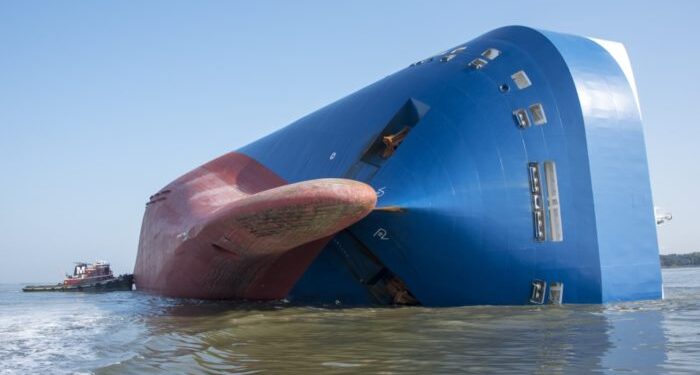Attorneys for salvors Donjon-SMIT filed a lawsuit against the USCG last week, aiming to stop salvage operations that are currently underway for the capsized car carrier Golden Ray. The lawsuit relates to USCG’s decision to allow the vessel owner to tender for third-party contractors who were not part of the approved response plan, to dismantle the ship on fixed-price instead of cost-plus terms.
According to the complaint, this decision violates OPA-90 regulations, applied to prevent oil spills from vessels and make vessel owners liable for incident-related costs.
After the tender, T&T Salvage has gained approval to cut the vessel into eight pieces. The plan Donjon-SMIT submitted suggested that the vessel would be cut into much smaller sections weighing about 600 tons each. This plan aims for a controlled removal of the more than 4,000 automobiles that are located inside the ship, while also minimizing stress on the damaged hull.
Moreover, Donjon-SMIT cites the salvage of the Baltic Ace saying that the removal of several large sections, made the remaining sections collapse.
However, in spite of the lawsuit, work on T&T Salvage’s environmental protection barrier around Golden Ray is expected to start this week.
[smlsubform prepend=”GET THE SAFETY4SEA IN YOUR INBOX!” showname=false emailtxt=”” emailholder=”Enter your email address” showsubmit=true submittxt=”Submit” jsthanks=false thankyou=”Thank you for subscribing to our mailing list”]
The 20,000 dwt Golden Ray capsized on September 8 last year while heading outbound from the Port of Brunswick with 4,200 vehicles on board. All crewmembers were rescued safely, though it took about 30 hours to free four crewmembers who were trapped in the vessel’s engine room.
‘Golden Ray’ capsized in St. Simons Sound, Brunswick, Georgia, on September 8, four of its crewmembers went missing.
According to The Brunswick News report, the car carrier Golden Ray was grounded after the pilot aboard, Captain Jonathan Tennant, deliberately took it out of the channel and contributed to the best possible outcome for the incident.
Until now, more than 315,000 gallons of fuel have been removed from the vessel. Nevertheless, according to Capt. Baer, an indefinite amount has entered the marine environment, as oil has been found along 29 miles of nearby shoreline, including areas where extremely small quantities of fuel have been found. It is lastly said that the Unified Command is regularly conducting spill response drills in order to be prepared in the event of a further release.




























































